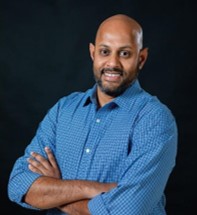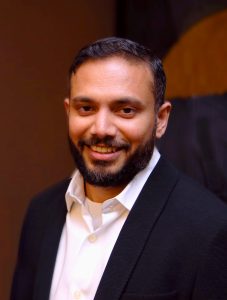Planning a platformless future, Devaka Randeniya, SVP & CRO, WSO2 and Asanka Abeysinghe, CTO, WSO2
By Robin Amlot
WSO2’s annual customer event, Oxygenate UK, was recently held in London and, on the fringes of the event, IBS Intelligence caught up with Devaka Randeniya [DR], SVP & CRO, and Asanka Abeysinghe [AA], CTO of WSO2
Since its inception in 2005, WSO2 has been at the forefront of building cloud-native software as a service (SaaS) and open-source offerings to provide a complete set of solutions across integration, API management, identity and access management (IAM) and application development.
WSO2’s products and platforms, including the next-gen internal developer platform Choreo, empower organisations to leverage the full potential of APIs for secure delivery of digital services and applications. This enables enterprises in over 90 countries globally to drive their digital transformation journeys. WSO2 was acquired by EQT Partners in August 2024. Sweden-based EQT is the world’s sixth-largest private equity firm. The WSO2 transaction was carried out by its India arm (part of EQT Private Capital Asia).

What is the practical impact of the EQT takeover?
[DR] “It was a complete buyout of WSO2. For us, we consider it as an extension to what we were already planning on doing, which is extending our go-to-market front and then see how we can further expand our ecosystem as a middleware platform company. The acquisition was done on the basis that the leadership continues to carry on. EQT are very much backing Sanjiva Weerawarana, our CEO, to further the mission of the company… and they have been very supportive in the form of building strategic relationships [with other EQT portfolio companies] to really see how we can leverage their success to really strengthen the position of WSO2.”
What of the future – you effectively have access to a war chest of funds?
[DR] “M&A is very much at the forefront. That’s something that we’ve initiated recently, started screening companies and obviously doing a lot of reaching out. Any acquisitions will be in one of two forms. One is obviously to gap-fill any capabilities from a product standpoint. And the other one is how we extend our go-to-market reach in specific markets. That, too, can be achieved through M&A as well.
“So, it is definitely a focus area for us as we try to increase our growth rate – what can we do in terms of generating inorganic growth as well for the next 5 years.”
What is in the tech stack?

[AA] “We are focusing on four areas: API management, integration, identity and access management. We recently introduced Choreo. This internal developer platform is an end-to-end platform that provides the capability to handle the entire lifecycle of an application, that allows users to design, they can create, they can run the applications within the platform. So, if the organisation doesn’t want to invest in building a platform, they can use it as a service. Basically, it’s an internal developer platform as a service.”
How does your platform as a service model square with the Oxygenate event theme ‘Go Platformless’?
[AA] “In the tech world, ‘-less’ doesn’t mean it’s disappearing! It is like shifting the focus. As an example, in wireless, you don’t see wires in your mobile, but there are wires behind the telco, right? Serverless, there are servers, but as a consumer, you don’t see the servers.
“Similarly, platformless means the consumers of the platform don’t see a platform; they just consume the platform built by somebody else. So that’s why platformless as a concept is coming.
“We introduced this concept because organisations have been focusing on platforms without building applications. And building a platform is not easy. It takes time. It requires a lot of skills. And if you invest in building a platform, you will not have time to build applications.
“As an example, there was one enterprise that employed more than 100 people for 3 years, spending 60% of its digital transformation budget, to build a platform. But after 3 years, requirements had changed, and technology had changed. So, the value of the platform was not there! That’s why we are telling you how to be platformless from the consumer point of view.”
You cited a company spending 3 years building its platform, such multi-year projects are surely impossible to justify in today’s world?
[AA] “It’s about being relevant, business requirements change, and the technology is not as ‘cool’ as what is currently available. It is a dangerous path, and you need the correct skill set to do it iteratively and treat the platform itself as a product – keep on improving it rather than try to do it as a project with a fixed time, fixed budget and set delivery.”
WSO2 is an open-source specialist – are there particular security concerns with open-source solutions?
[AA] “I think security is higher in open source! You can see any faults that you have in the code base. In that way, it’s more secure than a closed source because in a closed source, you can’t see anything.”
[DR] “I think the proof is in the pudding. In terms of our revenue, the largest vertical for us is BFSI. Number two is the public sector. A quarter of the world’s governments are running WSO2 as critical infrastructure.
“I think open source is by far one of the most secure types of software that’s out there. And I think another step further towards security is the fact that with open source we have much more control over the software that you are using today as opposed to a black box.
“We see large banks leveraging more of this type of software because they are able to cut to the source code and have ownership on how exactly they want to morph a product to their specific requirements. And by adhering to standards, we are able to allow them that customisation capability without having to break the product.”
What do you see changing in BFSI in the future?
[DR] “What we are seeing is banks are becoming more of a technology shop than a bank. If you look at our largest customers, including the largest European and US banks, if you look behind the curtain, they have 3,000-4,000 engineers building technology. Some are in region, or they’re based out of India.
“Some of those banks actually came to our offices and looked at how we operate on a day-to-day basis. And they literally looked at our layout and went and implemented the same sort of flow layout. So, there is more interoperability among engineers.
“Banks, in my opinion, are trying to become more tech-savvy organisations, with the goal of being competitive and be able to move fast in the market and bring more value to their customers.
[AA] “I think it’s about the digital experience, right? All transactions done digitally, right? And the banks are taking it to the next level. Capital One [in the USA] is a really good example. It’s a café! !t’s really hard to convince my 14-year old daughter this is a bank. She always says: ‘No, it’s a café.’ Because it is a café! If you need some help from the bank associates, they will come and have a coffee with you and then do your transaction. That’s how this domain is also changing. It is about the technology and how you can give a seamless digital experience to the end users.”
